We are pretty spoilt with the public transportation system in Switzerland, and it’s fair to say that getting around Africa wouldn’t be as easy as we are used to. In general, everything is possible in Uganda with the right contacts and - of course - the right money. It is also no issue to reach every single corner of the country with (semi-)public transport. However, this requires a lot of flexibility and patience, nevermind the willingness to sit in a stifling hot bus for hours on end. (Mini-)buses are normally packed to the roof with people, animals and goods, and usually your bag would even get tied to the roof of the vehicle. At least the bumpy road conditions, giant potholes, and never ending speed bumps to slow down traffic provide constant free massages each time you‘re on the road.
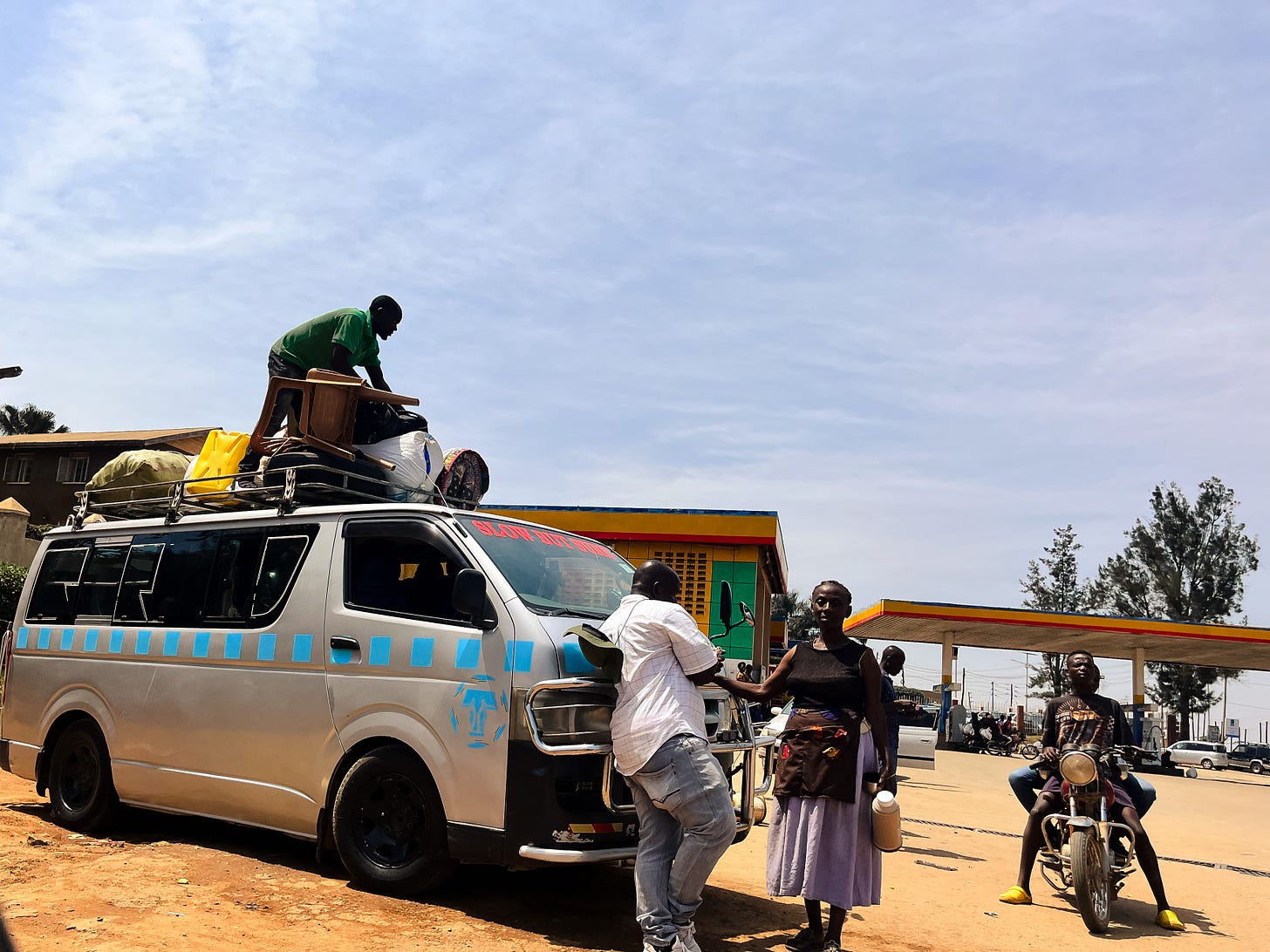
Then there is also the so called Boda Boda‘s, which are Moto-Taxis that are available on almost every street corner. They are convenient, as they can easily avoid pot holes and sneak between the traffic, but health-wise probably not the best option as you probably loose a few years from breathing in fumes and you definitely put your life at risk. We have only seen a few helmets so far and the ones we have seen rather belong in an antique shop…

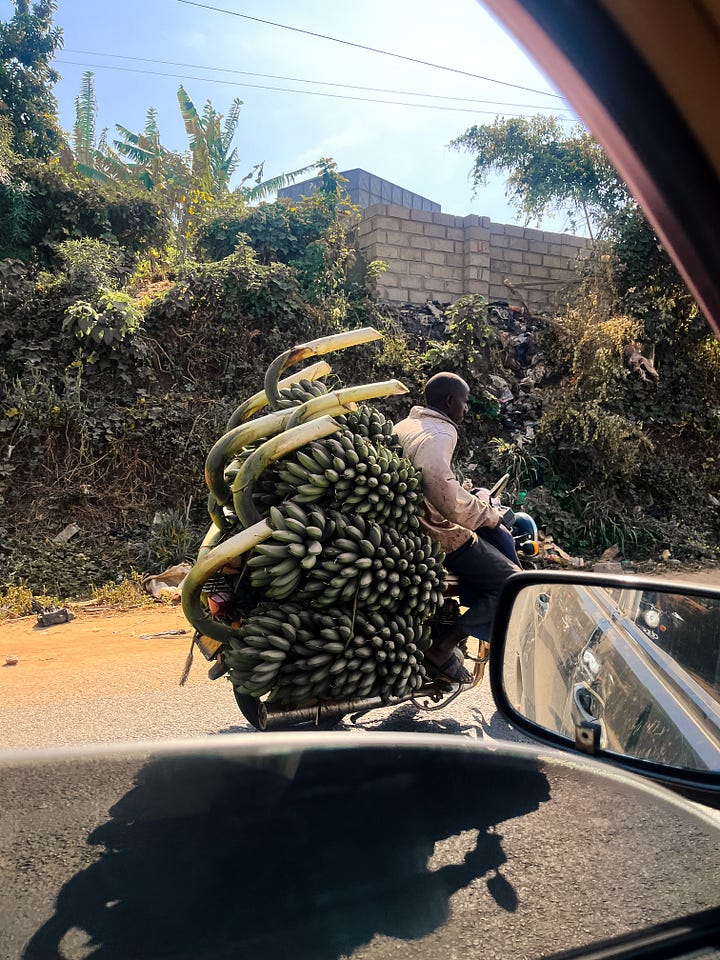
For all of those reasons, we had a feeling that since the time we started planning our trip, it was clear to us that we needed to get a car. Therefore, from the first day onwards we started to look out for a suitable vehicle.
Cars in Uganda are not very common. Out of 46 million people there are only 2.3 million cars (1 car for 20 people). What‘s more is that the cars available are often a bit outdated and not in the best condition. In the city Mbarara, where we currently are, there are exactly 2 car dealers. I would assume the average age of the cars they offer is 15/20 years. The fact that they often had to connect a battery first when we asked them for the mileage, already tells us that those cars will probably live out their last days in the car dealership cemetery…
Interestingly enough, all of the cars presented to us were „only driven by gentle old ladies“ who used the car solely for „going for groceries“ - of course. Even more interesting is the fact that we haven‘t actually seen many woman drive a car, let alone old ladies…
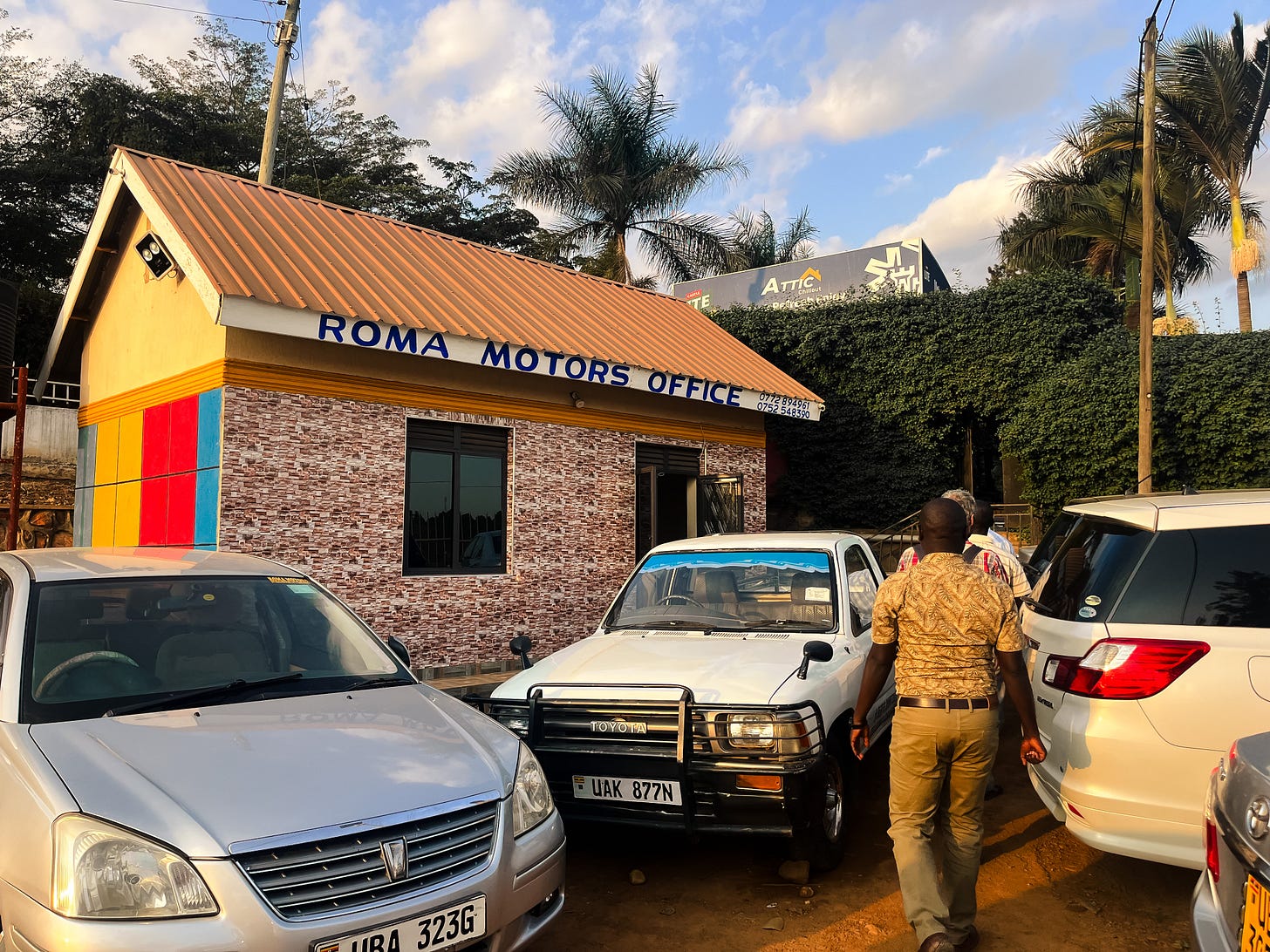
Eventually, we laid our eyes on an old Subaru Forster (year 2003), which seemed in pretty good condition. And the previous owner? You guessed it - besides the old lady there was also a doctor only driving from his home to the hospital. Prices for cars (even old third and fourth hand ones) are more expensive than in Europe and way over the budget we had estimated. This is mainly due to high transport and import costs, which is another reason many people have no chance of owning a car (at an average monthly salary of about USD 80).
After many rounds of negotiations with the help of local friends (obviously we were probably still paying the Muzungu - foreigner - premium), we had to start organizing the cash - cash is king. As it is challenging to transfer money to a Ugandan bank account (and it would most likely get lost on the way) our focus was to get money out of the ATMs. It took us a couple of hours to empty a few ATMs. ATMs have withdrawal limits of USD 250 at the time and can be depleted quickly, which was not liked by the people wanting to take out cash after us.
After a few hours of waiting for the car documents (even though promised that they were all readily available) we received some preliminary documentation via WhatsApp - just about good enough to proceed with closing the deal. After counting out millions of Ugandan Shillings and settling the bill in cash in a shady little room without lights, we were the proud owners of a new car - well at least physically…

The adventure had only begun. We learned the next day in the Ugandan Revenue Authority office, that in order to transfer the car to our names, a so-called TIN (tax identification number) is necessary. TINs are available for Ugandans and foreign residents but generally not for random tourists that want to cruise around Africa. After some small talk (and some IT support provided for the computer and printer in the tax office) we made friends with a funny tax lady called Fiona. With a bit of creativity she helped me to fill through all the forms required (with the appropriate and partially “invented” information) to get me a TIN number. Already two hours later I was officially an Ugandan tax payer (even though the Ugandan Tax authorities most likely won’t ever see a dime from me).
As if that were not enough, on top of my TIN number a signature from the previous owner on a special document is required. With the help a bit of extra money for the extra efforts, the funny tax lady helped us to track down the previous owner. On the phone he agreed to sign, however, he also said that we would have to keep reminding him because he is „very forgetful“. After calling him 5 times throughout the day, and still no commitment from his side, I decided to hop on a Boda boda and to track the guy down. You should have seen the surprised face of Boston, the previous owner, when the white Muzungu showed up in his own restaurant while he was having lunch, asking him for his signature and not leaving until he has it.
Back at the tax office and thinking that we are done, we were kindly informed that now all signed documents have to be brought to the capital city (6 hours away) for final approval and can only be delivered by the new owner in person, except - you got it, this one special guy who has the necessary contacts to finalize this approval. Another 100‘000 Shillings into Fiona‘s pockets, and hopefully it was the last amount, we were finally on the way towards concluding the famous „transfer of ownership“ and became the official new owners of our drivable companion.

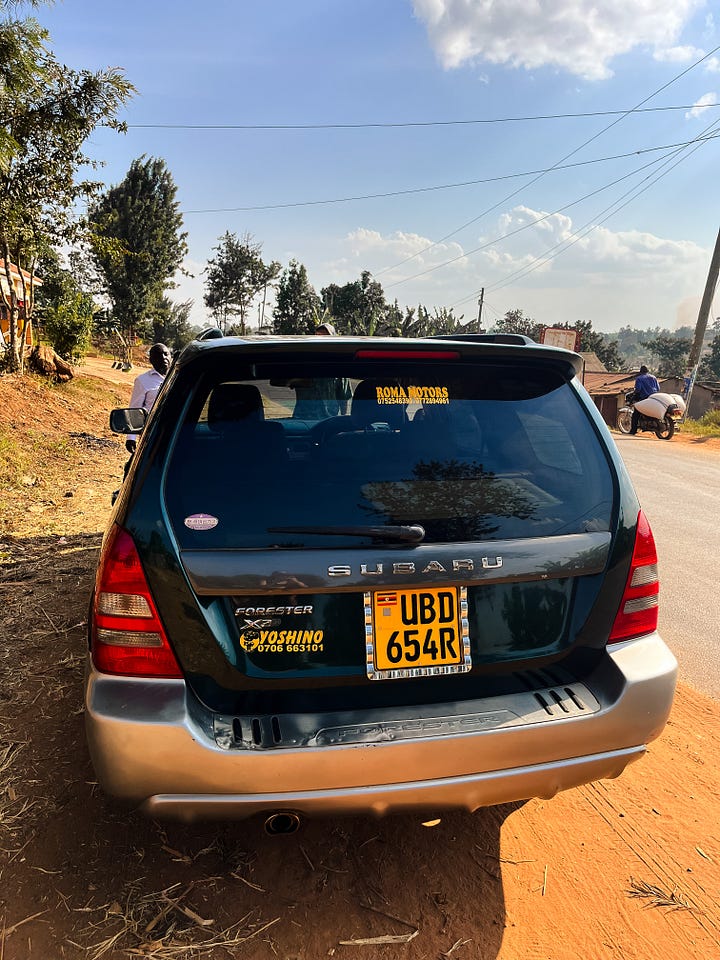





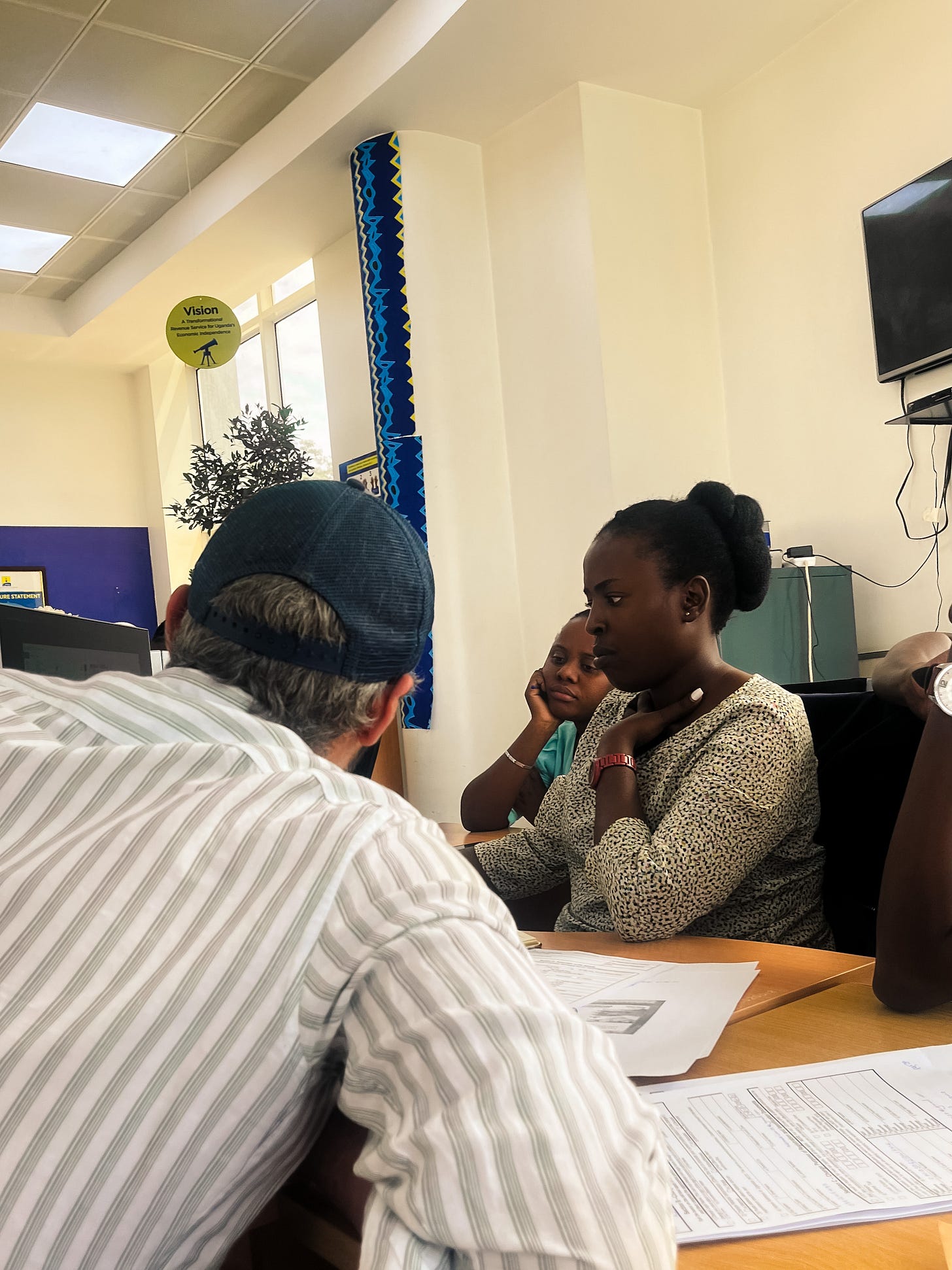
Subaru, absolutely fabulous. I wonder how the next owner will manage to you to sign for him after you returned to Switzerland 😉
What an adventure! You should try buying a small property now 🤪